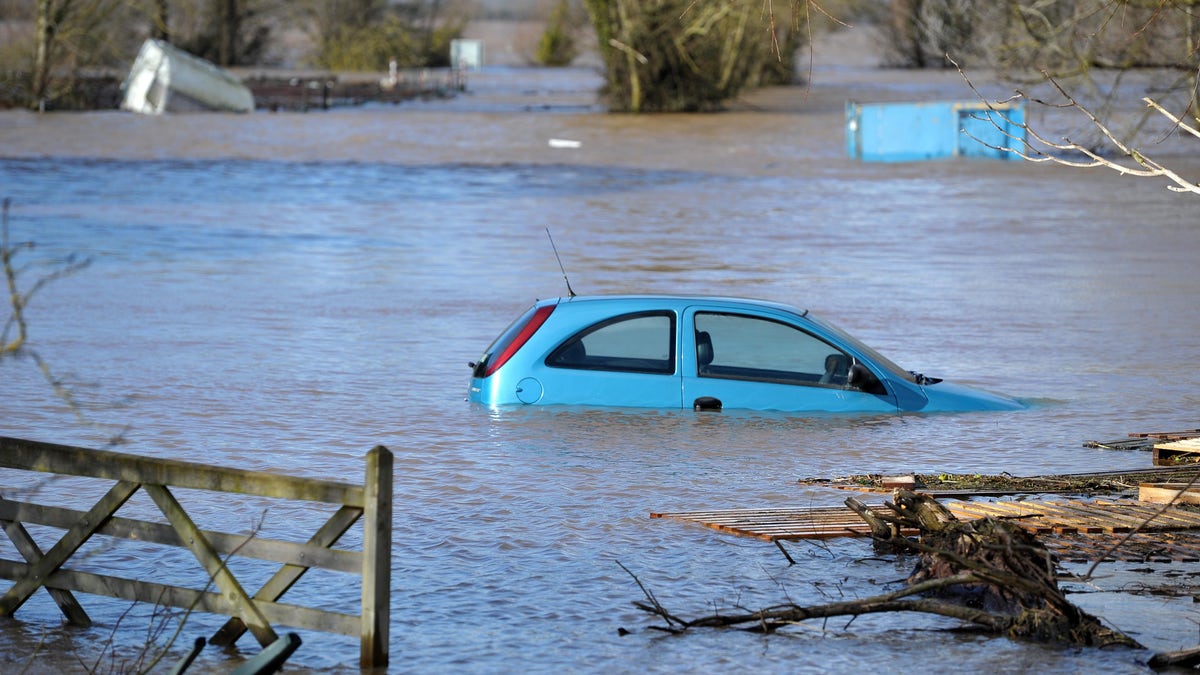
A car stands in the floodwater at Burrowbridge, southwestern England Sunday Feb. 9, 2014. There are around 270 low-level flood alerts and 179 medium-risk warnings in place across Wales and central and southern England on Sunday. (AP Photo/Tim Ireland/PA) UNITED KINGDOM OUT (The Associated Press)
LONDON – The River Thames has burst its banks after reaching its highest level in years, flooding riverside towns upstream of London.
Residents and British troops piled up sandbags to protect properties from the latest bout of flooding, but the river overwhelmed their defenses in several places Monday, leaving areas including the center of the village of Datchet underwater.
The Environment Agency has issued 14 severe flood warnings -- meaning there's a danger to life -- along the Thames east of Windsor, about 20 miles from London.
Its chief executive, Paul Leinster, said "extreme weather will continue to threaten communities this week" with more Thames flooding expected Tuesday.
There were no flood alerts for the part of the river that flows through London. That stretch is protected by the Thames Barrier, a series of giant metal gates downstream of central London that can be closed against tidal surges. By holding back the tide, the barrier also creates more space in the river for excess water from upstream to flow down to the sea.
England has had its wettest January since 1766. Its southwest coast has been battered repeatedly by storms and a large area of the low-lying Somerset Levels in the southwest has been under water for more than a month.
The disaster has sparked a political storm, with the Prime Minister David Cameron's Conservative-led government facing criticism from many residents for allegedly failing to dredge rivers and take other flood-prevention measures.
Both Cameron and Deputy Prime Minister Nick Clegg visited flood-hit areas Monday as the government struggled to take charge of the flooding crisis.
Cameron denied the government had been slow to respond.
"We have been dealing with it from the very moment it started," he said. "Where money was needed, we provided more money. Where military was needed, I made sure the military was deployed."
